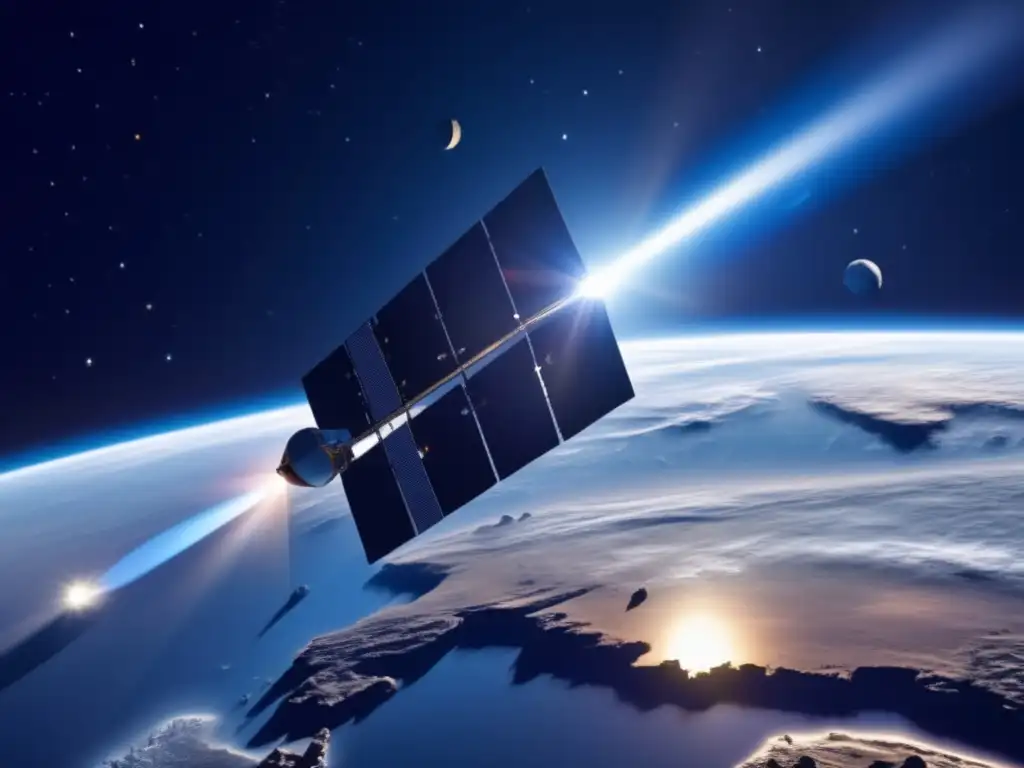The Battle Against Asteroids: Techniques For Planetary Defense

Introduction
Asteroids have been present in the solar system since its inception. These small celestial bodies are remnants of the planetary formation and can be found throughout the solar system. Asteroids are fascinating objects that offer insights into the history of our galaxy. However, they also pose a significant risk to the Earth if they collide with our planet.
Such an impact could release an enormous amount of energy equivalent to the detonation of thousands of nuclear bombs, causing widespread destruction and loss of life. Therefore, it is essential to develop techniques for planetary defense to mitigate the risk of asteroid impacts.
The Importance of Early Detection Systems

The Role of Telescopes in Early Detection
One of the most critical techniques for planetary defense is the early detection of asteroids. Telescopes are essential tools used to observe and track these small celestial bodies. Ground-based telescopes are often used to monitor asteroids, and space telescopes such as the Hubble Space Telescope have also contributed to asteroid research.
Automated Detection Systems
Automated detection systems have been developed to aid in the early detection of asteroids. These systems use various techniques, such as image recognition software, to identify and track asteroids. The Pan-STARRS survey telescope is one example of an automated detection system that has been successful in discovering many new asteroids.
Future Developments in Early Detection
Future developments in early detection systems will involve the use of advanced technologies such as artificial intelligence and machine learning to improve the accuracy and speed of asteroid detection. NASA's NEO Surveillance Mission is an example of a project that aims to use advanced technologies to improve asteroid detection.
Methods for Asteroid Deflection

Kinetic Impactor Technique
The kinetic impactor technique involves using a spacecraft to collide with an asteroid to change its trajectory. This technique is based on the principle of conservation of momentum, where the impulse provided by the spacecraft changes the asteroid's velocity and direction.
Gravity Tractor Technique
The gravity tractor technique involves placing a spacecraft near the asteroid, using its gravity to pull the asteroid into a different trajectory. This technique takes advantage of the gravitational attraction between the spacecraft and the asteroid to deflect it.
Nuclear Explosion Technique
The nuclear explosion technique involves detonating a nuclear device near the asteroid, which creates a shockwave that alters the asteroid's trajectory. This technique has not been tested and raises concerns about the potential environmental impact of such an explosion.
Challenges in Planetary Defense

Limited Resources
Planetary defense faces significant challenges due to limited resources. The cost of developing and launching spacecraft needed for asteroid deflection can be prohibitive. Therefore, it is essential to prioritize the most significant threats and allocate resources accordingly.
Unknown Factors
Another challenge in planetary defense is the unknown factors associated with asteroid deflection. Many variables, such as the asteroid's composition, shape, and rotation, can impact the efficacy of various deflection techniques. Therefore, more research is needed to better understand asteroids and their behavior.
International Cooperation
International cooperation is crucial for effective planetary defense. Asteroids do not recognize national borders, and therefore, a global effort is needed to mitigate the risk of asteroid impacts. Organizations such as the United Nations Office for Outer Space Affairs have made efforts to promote international cooperation in planetary defense.
Frequently Asked Questions

-
What is the likelihood of an asteroid impact?
The likelihood of an asteroid impact is relatively low, but the consequences could be catastrophic. Therefore, developing techniques for planetary defense is crucial to mitigate the risk.
-
How are asteroids detected?
Asteroids are detected using telescopes and automated detection systems. Ground-based telescopes and space telescopes such as the Hubble Space Telescope are commonly used to observe and track asteroids.
-
What methods are used for asteroid deflection?
Several methods are used for asteroid deflection, including the kinetic impactor technique, gravity tractor technique, and nuclear explosion technique. Each method has its advantages and limitations and must be carefully evaluated before implementation.
-
What are the challenges in planetary defense?
Planetary defense faces significant challenges due to limited resources, unknown factors associated with asteroid deflection, and the need for international cooperation. Addressing these challenges is critical to developing effective techniques for planetary defense.
-
How can individuals contribute to planetary defense?
Individuals can contribute to planetary defense by supporting organizations that promote asteroid research and planetary defense efforts. Additionally, raising awareness about the importance of asteroid research and the potential risks associated with asteroid impacts can help increase support for planetary defense efforts.
Conclusion
Effective techniques for planetary defense are crucial to mitigate the risk of asteroid impacts. Early detection systems and methods for asteroid deflection are essential tools in protecting our planet. However, there are significant challenges that must be addressed, including limited resources, unknown factors associated with asteroid deflection, and the need for international cooperation. By continuing to research asteroids and develop new techniques for planetary defense, we can better protect our planet from the potential catastrophic consequences of an asteroid impact.
We encourage readers to share their thoughts and comments in the section below and to subscribe to www.asteroidrealm.com to stay up-to-date on the latest asteroid research and planetary defense efforts.
Additional Resources

Center for Near Earth Object Studies
United Nations Office for Outer Space Affairs Planetary Defense Page
 Guarding Against Galactic Threats: Strategies For Asteroid Defense
Guarding Against Galactic Threats: Strategies For Asteroid Defense Planetary Protectors: The Science Of Asteroid Defense
Planetary Protectors: The Science Of Asteroid Defense Deflecting The Space Threat: Techniques For Asteroid Defense
Deflecting The Space Threat: Techniques For Asteroid DefenseIf you want to discover more articles similar to The Battle Against Asteroids: Techniques For Planetary Defense, you can visit the Planetary Defense category.
Leave a Reply

Articulos relacionados: